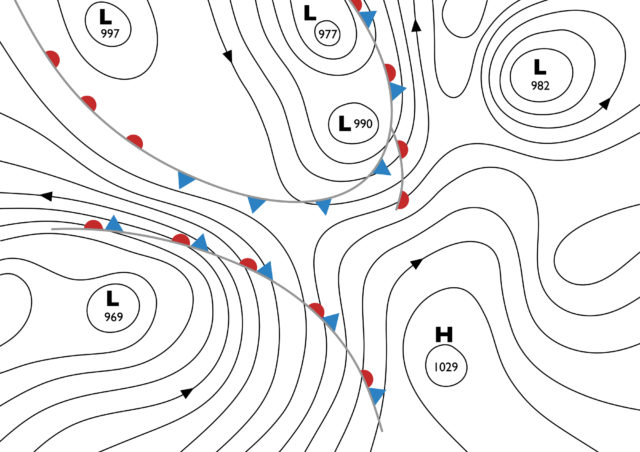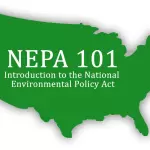
What is Environmental Finance?
Environmental finance is a field that on the surface is unfamiliar to most practitioners. However, most are familiar with some of the tools or products of environmental finance such as emissions trading and land trusts for conservation. This field essentially takes a financial look and methodology to address environmental issues. The first environmental finance collegiate course has been attributed to economist, Richard L. Sandor, in 1992 at Columbia University. (1) The economics and market analysis associated with finance is used towards funding conservation initiatives, improve the impact of businesses on the environment without sacrificing profitability and improve quality of life for a community. (2) Globalization has opened various investment opportunities across business sectors as interest expands among investors. Environmental finance is leading the shift from isolated environmental regulation control to market-driven economies.
Where is Environmental Finance Used?
Environmental finance is used across multiple sectors including business/corporate, governmental agencies, non-profit organizations and individual households. For example, businesses implement green practices that are economically viable. The growth of comprehensive environmental management systems illustrate the merging of environmental/sustainable and financial practices. Cost benefit analysis is a common method employed to ensure economic feasibility when multiple high priority community projects compete for available funding. Emissions trading (also called carbon trading) have been introduced through regulations and agreements. Even mitigation adopted language from the financial sector by implementing wetland mitigation banks.
Environmental impacts are avoided first before considering other alternatives. Once it has been determined that avoidance is not feasible, the next step is to minimize environmental impacts. Trading and banking are tools used to minimize and mitigate environmental impacts. An example would be changing shipping schedules so it uses less energy. It could also mean reducing inventory and capitalizing just-in-time delivery that may reduce emissions required to fabricate the product.
Public sector agencies across the world, including the United States, rely on environmental finance. The United States Environmental Protection Agency (EPA), Indonesia, Mongolia and multiple European countries have an environmental finance center or an environmental funding center. Most colleges and universities have a designated environmental finance center. Some colleges and universities offer environmental finance degrees that focus on economic and policy analysis, finance and analytics, science and technology, and markets and regulation. (3)
Who is Using Environmental Finance?
The EPA's environmental funding center targets state and local governments, tribes and businesses. (4) Their purpose is to educate about the myriad of methods to lower environmental costs, evaluate financial options and improve financial capacity so the agency or business moves toward sustainability. (5) Traditionally the total cost of a process, procedure, policy or product focused only on areas where money exchanged hands through invoices. Environmental finance expands the traditional organizational operations to include, or at least become aware of, the hidden costs that were largely ignored during the go/ no-go process including cost benefit analysis and return on investment calculations. For example, the cost benefit analysis could include regulatory costs such as permitting, monitoring, energy expenditure along the entire supply chain, auditing costs, carbon footprint of the company or product and socioeconomic costs. (6) Companies that already have an environmental management system (EMS) in place can expand to include the total environmental impacts and costs.
Multiple universities and states have created environmental finance centers. New Mexico's Environmental Finance Center is focused on asset management, which includes identification of assets and determination of the total life cycle. Environmental finance ranges the gamut from specific uses, such as with New Mexico, to broad applications such as funding research to determine methodologies for merging financial instruments with environmental needs.
Investment companies and banks, such as Wells Fargo, are entering the environmental market. Wells Fargo has announced plans to continue to grow in this arena. They invested $2.8 billion in 2011 with plans to increase it to a total of $30 billion by the year 2020. (7) Wells Fargo investments cover a wide range of environmental and sustainable projects including alternative energy sources, energy efficient infrastructure and community development grants.
Examples of Environmental Finance in Action
Two of the most common and well-known examples of environmental finance are the use of land trusts and carbon emissions trading. A land trust is when an agency or entity designates the use of the property for a specified time. A conservation easement is an example of a land trust. The land trust does not automatically exempt using the property but it may designate the type of activity encouraged or allowed such as agriculture, public access, wildlife habitat, timber production, etc. Most of the time, the landowner receives a tax incentive or similar form of payment in exchange for the easement.
Carbon emissions trading are newer but the overall concept generally follows the cap-and-trade model. A geographic area is capped for a specific total amount. This amount is divided among those considered high emitters. The idea is a generator can sale their “left over” credits to a higher emissions generator. This way the total amount designated for the area is not exceeded. The enticement of an additional revenue stream may spur additional research towards reducing the overall emissions of a company.
The combined total emissions of a company are called the carbon footprint. While the carbon footprint can be determined at the household level, most are focused on an organization, company or entity. The carbon footprint is determined through the calculation of the direct emissions of the company plus the indirect emissions such as the emissions from energy production (e.g. electricity production). Optional emissions are often included in the calculations. Optional emissions cover shipping and transportation, business travel, etc. (8) California is the only state within the U.S.A. that participates in a mandatory cap-and-trade program. The goal of California's program is to reduce emission levels by 2020 to those experienced during 1990. It is a very young program with 2013 being the first year of implementation even though mandatory reporting of actual emissions was in effect since 2008.
Another potential future for environmental finance is with water emissions trading. Total Maximum Daily Loads (TMDLs) have been established for impaired streams within the United States through water quality regulations. The rough concept being discussed is similar to the carbon emissions trading. Essentially, a lower emitter would be able to sell credits to a higher emitter as long as the total emissions do not exceed the established maximum limits. Water emissions trading is still in the infancy of discussion so it may be quite a few years before seeing how well the model works towards reaching the overall goal of pollution reduction.
Sources
- http://en.wikipedia.org/wiki/Environmental_finance
- https://www.johnson.cornell.edu/Center-for-Sustainable-Global-Enterprise/Students/Curriculum
- https://www.epa.gov/waterfinancecenter
- http://www.umich.edu/~nppcpub/resources/compendia/FINpdfs/FIN_Environmental_Finance.pdf
- Cultural Resources 101: Part of the Federal Environmental Process - March 8, 2015
- Introduction to Environmental Finance - January 26, 2015
- Indoor Air Quality and Environmental Health - December 21, 2014
Related Articles
Featured Article

Climatology: The Science of Global Weather Systems over the Long Term





